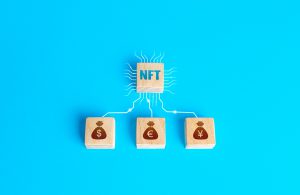
Breakthroughs in connectivity and technology are reshaping the way we live. Artificial Intelligence (AI), machine learning, Internet of Things (IoT), robotics, 3D printing, biotech, blockchain and drones, just to mention a few, are paving the way for transformative changes in our daily lives.
There are 4.8 billion active internet users worldwide today, which makes for 61 percent of the global population. [1] Instruments such as Google, WhatsApp and social media in general are being used to engage, gather information (or misinformation) and/or make a living. Almost every day, we witness a new technological innovation coming up. For instance, have you ever noticed how Facebook recognizes your face and tags you in a friend’s photo, as part of facial recognition development?
The Fourth Industrial Revolution is radically disrupting almost every sector and, in short, emerging technologies are proving to have a significant value proposition. Technologies such as blockchain (a distributed ledger technology) has created the way for decentralized markets, featuring digital assets such as cryptocurrencies like Bitcoin and upcoming Non-Fungible Tokens (NFTs).
NFTs are unique digital assets that include jpegs and video clips. They are represented by a code recorded on a blockchain. These codes become a decentralised digital ledger, which can be sold and traded. They mostly represent real-world objects such as art, music, in-game items, and videos. [2] They are bought and sold online, frequently with cryptocurrency, and they are generally encoded with the same underlying software as many cryptos. [3]
But what does this has to do with the development sector, you may be wondering. For Chouliaraki, the rise of new media technologies and Web 2.0 applications has been one of the driving forces behind shifts in aesthetics and discourses of “post-humanitarian” communication and engagement. [4]
In India, a digital artwork was auctioned as NFT to raise funds through crypto as a donation for covid reliefs efforts. As a result to it, a total of 15 million US-Dollars were raised through the auction, which were then donated to UNICEF to purchase 160 million syringes. Similarly, Ethereum founder Vitalik Buterin, donated the meme coin Shiba Inu ‘Doge’ (worth 1 billion US-Dollars) to India’s Covid relief fund. [5]
The concept of “meme” was first coined in 1976 by biologist Richard Dawkins, as part of his broader theorization of cultural evolution. The term has entered popular culture with creators of digital content, explicitly referring to images, videos, animations, catchphrases, and #hashtags as memes. [6]
However, only a tiny percentage of memes will “go viral” and become popular. For example, the Shiba Inu meme became popular through the sharing behavior of users and the platform or search engine algorithms that facilitate such spread. [7]
NFTs today are providing an opportunity to people offering their digital assets for sale and also for social good. In September 2021, OpenSea, the world’s largest NFT marketplace, saw over 2 billion US-Dollar in transactions, with some individual NFT collectibles selling for millions of dollars. [8] On the other hand, NFTs are also offering an opportunity to create an improved social economy, rather than just individual economic benefits. The most common way NFTs are being used for social good is through fundraising.
In December 2020, UNICEF leveraged NFT and blockchain-based technology for the first time for charity fundraising: The Sandbox Gaming Virtual World. All proceeds of the auction were donated to support UNICEF’s Crypto Fund, contributing to fund open-source technology benefiting children and young people around the world. [9]
It is maybe too early to understand the main use NFT could have in the development sector, but the fundraising potential seems high. Could NFT disrupt the traditional donor recipient-country relation? It remains to be seen, but a more balanced and decolonized relation could emerge thanks to innovation. Or will it just replicate traditional power structures at the end?
References:
[1] https://datareportal.com/global-digital-overview
[2] https://www.cnbc.com/2021/08/25/12-year-old-coder-made-6-figures-selling-weird-whales-nfts.html
[3] https://www.forbes.com/advisor/investing/nft-non-fungible-token/
[4] Chouliaraki L. Post-humanitarianism: Humanitarian communication beyond a politics of pity. International Journal of Cultural Studies. 2010;13(2):107-126. doi:10.1177/1367877909356720
[5] https://inc42.com/buzz/crypto-relief-donates-15-mn-to-unicef-india-to-procure-syringes/
[6] https://journals.sagepub.com/doi/full/10.1177/2056305119888655
[7] Knobel, Michele & Lankshear, Colin. (2007). Online memes, affinities, and cultural production.
[8] https://www.cnbc.com/2021/09/01/fans-can-buy-a-fraction-of-original-doge-meme-nft-owned-by-pleasrdao.html
[9] https://www.animocabrands.com/investors

